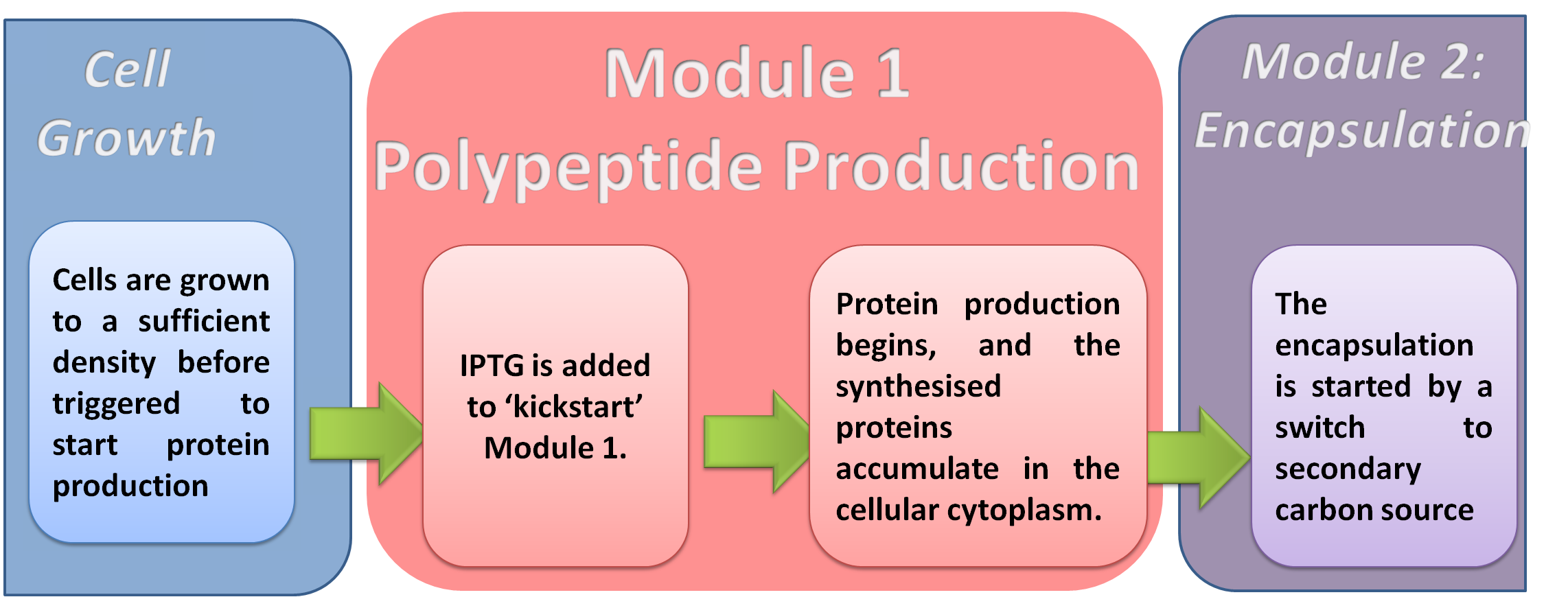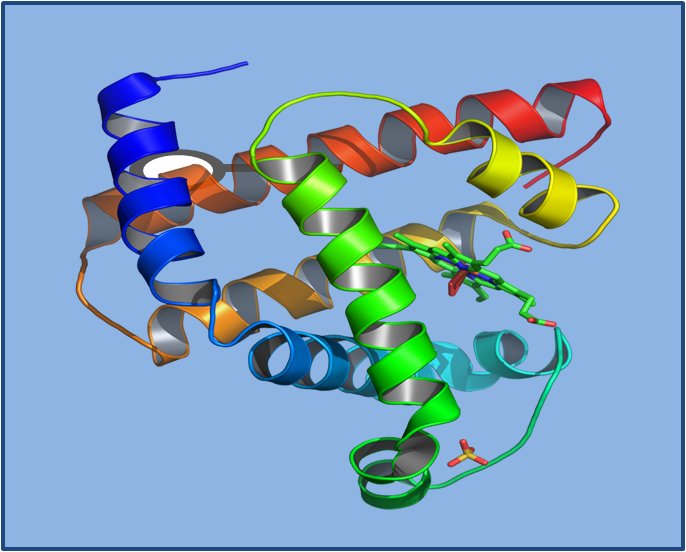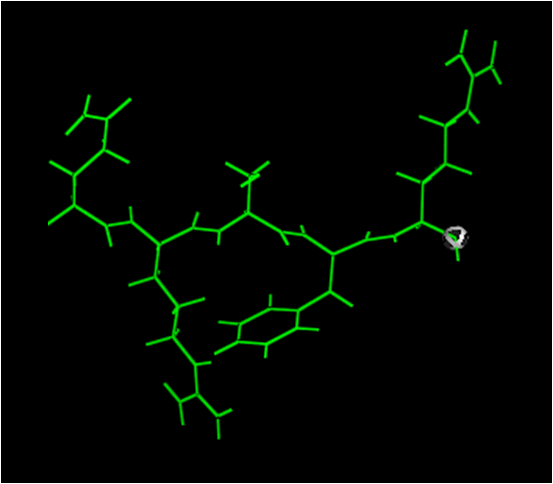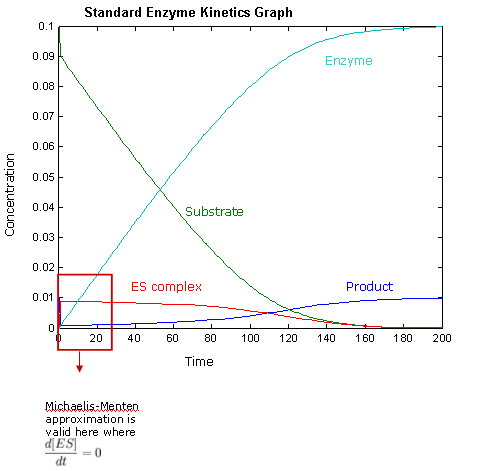Team:Imperial College London/M1
From 2009.igem.org
| (527 intermediate revisions not shown) | |||
| Line 1: | Line 1: | ||
{{Imperial/09/TemplateTop}} | {{Imperial/09/TemplateTop}} | ||
| - | < | + | |
| + | |||
| + | |||
| + | <html> | ||
| + | <center> | ||
| + | <div class="highslide-gallery"> | ||
| + | <a href="https://static.igem.org/mediawiki/2009/2/27/II09_MapIndicator_Module1.png" class="highslide" onclick="return hs.expand(this)" title= "After chemoinduction, the protein of interest is produced and accumulates in the cell"> | ||
| + | <img src="https://static.igem.org/mediawiki/2009/2/27/II09_MapIndicator_Module1.png" usemap="#MAP91791" border="0" width="75%" title="Overview picture of the E.ncapsulator"> | ||
| + | </a> | ||
| + | <div class="highslide-caption"> | ||
| + | Module 2: Encapsulation | ||
| + | </div> | ||
| + | </div> | ||
| + | </center> | ||
| + | </html> | ||
| + | =<!--[[Image:II09_Thumb_m1.png| 40px]]--><font size='5'><b>Module 1: Protein Production</b></font>= | ||
| + | <html> | ||
| + | <center> | ||
| + | <div class="highslide-gallery"> | ||
| + | <a href="https://static.igem.org/mediawiki/2009/7/70/II09_M1_Chart.png" class="highslide" onclick="return hs.expand(this, config1)"> | ||
| + | <img src="https://static.igem.org/mediawiki/2009/7/70/II09_M1_Chart.png" alt="" title="Click to enlarge" width="75%"/> | ||
| + | </a> | ||
| + | <div class="highslide-caption"> | ||
| + | Module 2 Timeline | ||
| + | </div> | ||
| + | </div> | ||
| + | </center> | ||
| + | </html> | ||
| + | <br> | ||
| + | |||
| + | ==Protein Production== | ||
| + | ===Overview=== | ||
| + | [[Image:II09_M1_Slide.png|right|190px]] | ||
| + | <b><i>The E.ncapsulator</i></b> has been designed to produce and deliver protein biopharmaceuticals to the intestine. <b>Module 1</b> encompasses the protein production phase of the system. <b><i>The E.ncapsulator</i></b> is engineered to allow the production of any protein or polypeptide. | ||
| + | |||
| + | ===Rationale=== | ||
| + | In order to perform this function successfuly, the polypeptide (amino acid polymer) must be synthesised at a rate that will be sufficient to facilitate its accumulation inside the cytoplasm of the cell. With our generic design, it is possible to synthesise any polypeptide, so we have a thoroughly reusable system.<br><br> | ||
| + | <html><a href="https://2009.igem.org/Team:Imperial_College_London/M1_Detail"><img style="vertical-align:bottom;" width=50px align="left" src="http://i691.photobucket.com/albums/vv271/dk806/II09Learnmore.png"></a></html> <b><i>About the difference between enzymes and peptides.</i></b><br><br><br> | ||
| + | |||
| + | ==Theory== | ||
| + | ===Engineering a cell to produce a protein=== | ||
| + | |||
| + | DNA is transcribed into mRNA which is in turn translated into protein. By knowing the amino acid sequence of the polypeptide of interest, we work backwards and convert this into a DNA sequence coding for production of the protein. | ||
| + | |||
| + | In our case this has been developed further by optimising the DNA sequence for <i>E.coli</i>. By combining this coding sequence the other necessary genetic components, we can engineer the chassis to manufacture the protein. | ||
| + | |||
| + | ===Genetic circuit=== | ||
| + | |||
| + | <i>This is the remaining part of the [[Team:Imperial_College_London/M1/Genetic |Module 1 genetic circuit]]</i><br> | ||
| + | [[Image:II09_M1_GenCir.png | 400px]] | ||
| + | |||
| + | |||
| + | <html><a href="https://2009.igem.org/Team:Imperial_College_London/M1/Genetic"><img style="vertical-align:bottom;" width=50px align="left" src="http://i691.photobucket.com/albums/vv271/dk806/II09Learnmore.png"></a></html> <b><i>About the genetic circuit</i></b><br><br> | ||
| + | <!-- | ||
| + | ===Initiation=== | ||
| + | <br> | ||
| + | [[Image:II09_M1_Promoter.png|left|380px]] | ||
| + | <br><br> | ||
| + | The module has been put under the control of an inducible promoter. Under normal circumstances the promoter is repressed by the presence of LacI protein, which stops the RNA polymerase from transcribing [ref]. When IPTG is introduced, it binds to the LacI protein and it changes its conformation, preventing it to bind to the promoter. This lifts the repression [ref here] and allows the downstream genes to be transcribed.<br> | ||
| + | <br><br> | ||
| + | |||
| + | [[Image:II09_M1_ProteinProd.png|right|290px]] | ||
| + | |||
| + | --> | ||
| + | |||
| + | <br><br> | ||
| + | |||
| + | ==Polypeptide Showcase== | ||
| + | To demonstrate <b><i>The E.ncapsulator</i></b>'s versatility, we have chosen to showcase it with both enzymes and peptides. These two classes of polypeptide have very different properties that we have considered and catered for in <b><i>The E.ncapsulator</i></b>'s design.<br> | ||
| + | |||
| + | ===Enzyme Production=== | ||
| + | [[Image:II09_EnzGraphic.png|190px|left]]One of the challenges involved in enyzme production is the need for resistance to the proteases found within the small intestine. Although <b><i>The E.ncapsulator</i></b> is capable of delivering the enyzmes safely through the harsh environment in the stomach, upon release into the small intestine, the cells would be susceptible to breakdown by the proteases naturally found in the gut enviroment. For this reason, we have used protease resistant forms of the enyzmes to be produced. <br><br><br><br> | ||
| + | We have chosen two enzymes to showcase <b><i>The E.ncapsulator</i></b>'s protein production module. These are:<br><br> | ||
| + | |||
| + | *<b>Cellulase</b> - an enzyme that breaks down the tough fibrous molecule cellulose into cellobiose. In delivering cellulase to the gut we aim to increase the nutritional value of food consumed.<br> | ||
| + | <html><a href="https://2009.igem.org/Team:Imperial_College_London/M1/Cellulase"><img style="vertical-align:bottom;" width=50px align="left" src="http://i691.photobucket.com/albums/vv271/dk806/II09Learnmore.png"></a></html> <b><i>About cellulase and our proposed solution </i></b><br><br><br> | ||
| + | |||
| + | *<b>Phenylalanine Hydroxylase </b>- an enzyme that breaks down the amino acid phenylalanine into tyrosine. In delivering this enzyme to the gut we aim to provide a treatment to those suffering from the metabolic condition, phenylketonuria.<br> | ||
| + | <html><a href="https://2009.igem.org/Team:Imperial_College_London/M1/PAH"><img style="vertical-align:bottom;" width=50px align="left" src="http://i691.photobucket.com/albums/vv271/dk806/II09Learnmore.png"></a></html> <b><i>About the genetic condition phenylketonuria, PAH and how we modified it</i></b><br><br> | ||
| + | |||
| + | ===Peptide Production=== | ||
| + | [[Image:II09_Opiorphin.png|right|190px]] | ||
| + | The delivery and production of short chain peptides is a different challenge altogether. All peptides when synthesised always start with the amino acid methionine. If synthesised directly, this can mean that the peptide no longer has the same bioactivity. The body naturally has a mechanism by which larger polypeptides are degraded into smaller functional peptides. | ||
| + | |||
| + | Using this mechanism, we have designed a universal adapter for short chain peptide production and delivery, by which any peptide can be produced and delivered to the gut. | ||
| + | |||
| + | <html><a href="https://2009.igem.org/Team:Imperial_College_London/M1/PeptideDelivery"><img style="vertical-align:bottom;" width=50px align="left" src="http://i691.photobucket.com/albums/vv271/dk806/II09Learnmore.png"></a></html> <b><i>About our unique strategy for universal manufacture of peptides </i></b><br><br><br><br> | ||
| + | |||
| + | To demonstrate this, we have chosen to showcase a short chain peptide, opiorphin: | ||
| + | *<b>Opiorphin </b>- is a small pentapeptide (5 amino acids) that is naturally produced by the body, and plays a role in pain relief and as an anti-depressant. By delivering this small peptide into the gut, we hope to offer a natural alternative to addictive drugs. | ||
| + | |||
| + | <html><a href="https://2009.igem.org/Team:Imperial_College_London/M1/Opiorphin"><img style="vertical-align:bottom;" width=50px align="left" src="http://i691.photobucket.com/albums/vv271/dk806/II09Learnmore.png"></a></html> <b><i>About opiorphin, and the remarkable effects of this small pentapeptide </i></b><br><br> | ||
| + | <br><br> | ||
| + | |||
| + | == Results == | ||
| + | ===Wet Lab=== | ||
| + | We have planned protocols for the testing of each of our enzymes of interest, [http://partsregistry.org/wiki/index.php?title=Part:BBa_K200028 BBa_K200028] and [http://partsregistry.org/wiki/index.php?title=Part:BBa_K200007 BBa_K200007] (see [[Team:Imperial_College_London/Wetlab/Protocols | Wet Lab Protocols]]). However, up till now, we have been unable to ligate them into a testable construct. | ||
| + | |||
| + | ===Dry Lab=== | ||
| + | Our Dry Lab team focused on analysing enzyme kinetics theories, such as the well-know Michaelis Menten kinetics. One of the main aims of the dry lab was to characterise the dynamics of the system, making sure enzyme delivery was suitable. | ||
| + | |||
| + | [[Image:Ii09_enzymekinetics.png|right|350px]] | ||
| + | Enzyme kinetic simulations were run to model our system. These are some of the general findings: | ||
| + | *For lower values of [S<sub>0</sub>], the rate of formation of the product is directly proportional to the amount of [S0]. However, for higher values of [S<sub>0</sub>], rate of formation of product saturates at a maximum rate. | ||
| + | *Michaelis-Menten approximation only holds for very small values of [E<sub>0</sub>]. | ||
| + | *Increasing K<sub>3</sub> values will increase rate of formation of product. | ||
| + | And finally: | ||
| + | *Michaelis-Menten assumption can be applied to our system because for us, K<sub>M</sub> >> [E<sub>0</sub>] | ||
| + | <br> | ||
| + | <br> | ||
| + | <br> | ||
| + | <br> | ||
| + | |||
| + | ==Conclusion== | ||
| + | Engineering of bacteria to produce proteins is by no means a new development. However, due to the way in which we have designed our chassis to manufacture a protease resitant strains of the enzymes, as well as the unique method for the production and delivery of small peptides, we believe that <b><i>The E.ncapsulator</i></b> offers a novel approach to polypeptide production. | ||
| + | |||
| + | <!-- | ||
| + | ===Enyzme Production=== | ||
| + | One of the challenges involved in enyzme production is the need for resistance to the proteases found within the small intestine. Although <b><i>The E.ncapsulator</i></b> is capable of delivering the enyzmes safely through the harsh environment in the stomach, upon release into the small intestine, the cells would be susceptible to breakdown by the proteases naturally found in the gut environent. For this reason, we have used protease resistant forms of the enyzmes to be produced. <br> | ||
| + | We have chosen two enzymes to showcase <b><i>The E.ncapsulator</i></b>'s protein production module.<br> | ||
| + | These are:<br> | ||
| + | *<b>Cellulase</b> - an enzyme that breaks down the tough fibrous molecule cellulose into cellobiose. Cellulose is not digested by the human body and is commonly referred to as dietary fibre. Cellulose is made up of repeating units of glucose molecules, and as such, is a large store of energy. Also, cellulose can form viscous gel-like structures that trap starch, proteins and fats which would otherwise be accessible to the animal's digestive enzymes and transport systems. By using <i><b>The E.ncapsulator</i> to deliver cellulase to the gut, we hope that more nutritional value can be obtained from food consumed. In doing this we could reduce levels of malnutrition around the world. | ||
| + | |||
| + | *<b>Phenylalanine Hydroxylase </b>- an enzyme that breaks down the amino acid phenylalanine into tyrosine. A deficiency or defective PAH enzyme results in a condition called phenylketonuria. This enzyme deficiency results in the accumulation of phenylalanine in the blood, which can result in serious problems such as seizures and mental retardation. By using <b><i>The E.ncapsulator</i></b>'s unique drug delivery mechanism, we hope that by delivering PAH into the small intestine, we can relieve people of this condition.<br><br> | ||
| + | --> | ||
| + | |||
| + | <!-- | ||
| + | ===Peptide Production=== | ||
| + | The delivery and production of short chain peptides is a different challenge altogether. All peptides when synthesised always start with the amino acid methionine. If synthesised directly, this can mean that the peptide no longer has the same bioactivity. The body naturally has a mechanism by which larger polypeptides are degraded into smaller functional peptides. Using this mechanism, we have designed a universal adapter for short chain peptide production and delivery, by which any peptide can be produced and delivered to the gut. | ||
| + | To demonstrate this, we have chosen to showcase a short chain peptide, opiorphin: | ||
| + | *<b>Opiorphin </b>- is a small pentapeptide (5 amino acids) that is naturally produced by the body, and plays a role in pain relief and as an anti depressant. By delivering this small peptide into the gut, we hope to offer a natural alternative to the other more addictive drugs. | ||
| + | <b>Module 1</b> is chemically induced by the addition of IPTG. This makes up part of the temporal control module, under the chemical induction section. After sufficient amount of protein of interest has been produced, autoinduction occurs and encapsulation will start. | ||
| + | --> | ||
| + | <center> | ||
| + | |||
| + | ===Project Tour=== | ||
| + | <html><center><a href="https://2009.igem.org/Team:Imperial_College_London/Chemoinduction"><img width=150px src="http://i691.photobucket.com/albums/vv271/dk806/CIL.jpg"></a><a href="https://2009.igem.org/Team:Imperial_College_London/Autoinduction"><img width=150px src="http://i691.photobucket.com/albums/vv271/dk806/AIR.jpg"></a></center> | ||
| + | </html> | ||
| + | <hr> | ||
| + | |||
| + | ===Module 1 Contents=== | ||
| + | |||
| + | |||
| + | <html><center><a href="https://2009.igem.org/Team:Imperial_College_London/M1/EnzymeDelivery"><img style="vertical-align:bottom;" width="20%" src="http://i691.photobucket.com/albums/vv271/dk806/II09_Homepageimage3.png"></a><a href="https://2009.igem.org/Team:Imperial_College_London/M1/PeptideDelivery"><img style="vertical-align:bottom;" width="18%" src="https://static.igem.org/mediawiki/2009/e/ea/II09_Homepageimage3.png"></a><a href="https://2009.igem.org/Team:Imperial_College_London/M1/Genetic"><img style="vertical-align:bottom;" width="20%" src="http://i691.photobucket.com/albums/vv271/dk806/II09_geneticcircuit1.png"></a><a href="https://2009.igem.org/Team:Imperial_College_London/Wetlab/Results#Module_1"><img style="vertical-align:bottom;" width="20%" src="http://i691.photobucket.com/albums/vv271/dk806/II09_Wetlabmainimage9.png"></a><html><a href="https://2009.igem.org/Team:Imperial_College_London/M1/Modelling"><img style="vertical-align:bottom;" width="20%" src="http://i691.photobucket.com/albums/vv271/dk806/II09_Drylabmainimage6.png"></a><center></html> | ||
| + | </center> | ||
| + | <html><table border="0" style="background-color:transparent;" width="100%"> | ||
| + | <tr><td width="0%"></td> | ||
| + | |||
| + | <td width="20%"><center><a href="https://2009.igem.org/Team:Imperial_College_London/M1/EnzymeDelivery"><b>Enzyme Delivery</b></a></center></td> | ||
| + | |||
| + | <td width="20%"><center><a href="/Team:Imperial_College_London/M1/PeptideDelivery"><b>Peptide Delivery </b></a></center></td> | ||
| + | |||
| + | <td width="20%"><center><a href="https://2009.igem.org/Team:Imperial_College_London/M1/Genetic"><b>Genetic Circuit</b></a></center></td> | ||
| + | |||
| + | <td width="20%"><center><a href="https://2009.igem.org/Team:Imperial_College_London/Wetlab/Results#Module_1"><b>Wet Lab</b></a></center></td> | ||
| + | |||
| + | <td width="20%"><center><a | ||
| + | href="https://2009.igem.org/Team:Imperial_College_London/M1/Modelling"><b>Modelling</b></a></center></td> | ||
| + | |||
| + | <td width="1%"></td> | ||
| + | </tr></table></html> | ||
| + | <!-- | ||
| + | {{Imperial/09/Division}} | ||
| + | |||
| + | ==<b>Peptide Delivery</b>== | ||
| + | |||
| + | Many peptide drugs are suseptible to breakdown in the stomach making them suitable candidates for encapsulation. | ||
| + | |||
| + | When synthesised, all polypeptides begin with the same amino acid: methionine. However, many polypeptides are subsequently chopped into smaller functional peptides that do not begin with methionine. | ||
| + | |||
| + | [[Image:MethPep.png|400px|left]] | ||
| + | <br> | ||
| + | |||
| + | If we were to use natural polypeptide processing pathways, we would be forced to equip <b><i>The E.ncapsulator</i></b> with different enzymes for different polypeptides. We have avoided this inelegant solution and instead created a universal processing pathway that is compatible with all peptides. What is more, our system does not require the expression any additional genes!<br> | ||
| + | |||
| + | |||
| + | <html><a href="https://2009.igem.org/Team:Imperial_College_London/PPS"><img style="vertical-align:bottom;" width=90px align="left" src="http://i691.photobucket.com/albums/vv271/dk806/II09_Learnmore.png"></a></html><br><br> About how our universal peptide processing system works. | ||
| + | <br> | ||
| + | <br> | ||
| + | <br> | ||
| + | |||
| + | ===Opiorphin=== | ||
| + | |||
| + | To showcase peptide delivery, we have selected the pentapeptide (five amino acids) opiorphin. This peptide is naturally found in human saliva and plays a role in pain relief and pleasure. The delivery of opiorphin by <i>The E.ncapsulator</i>, marks the iGEM first entry to tackle psychological problems such as chronic pain and depression.<br> | ||
| + | |||
| + | |||
| + | <html><a href="https://2009.igem.org/Team:Imperial_College_London/Opiorphin"><img style="vertical-align:bottom;" width=90px align="left" src="http://i691.photobucket.com/albums/vv271/dk806/II09_Learnmore.png"></a></html><br><br> About opiorphin. | ||
| + | |||
| + | {{Imperial/09/Division}} | ||
| + | |||
| + | ==<b>Enzyme Delivery</b>== | ||
| + | |||
| + | To carry out their functions, enzymes must maintain their precise three dimensional conformations. Many enzymes denature in the acidic conditions of the stomach rendering them inactive. Even enzymes that survive stomach acid must face an assalt from stomach proteases. For these two reasons, enzymes are well suited for encapsulation. <i>The E.ncapsulator</i> has been showcased with two important enzymes: phenylalanine hydroxylase (PAH) and cellulase. | ||
| + | |||
| + | |||
| + | ===<b>Phenylalanine Hydroxylase (PAH)</b>=== | ||
| + | <html><left> | ||
| + | <img style="border:3px solid #000;" src="http://upload.wikimedia.org/wikipedia/commons/1/16/Phenylketonuria_testing.jpg" width="250"> | ||
| + | </left></html> | ||
| + | |||
| + | PAH converts one amino acid (phenylalanine) into another (tyrosine). PAH is normally found in the liver, however individuals lacking this important enzyme suffer from the genetic disorder Phenylketonuria (PKU). Individuals with PKU must limit their consumption of phenylalanine otherwise its accumulation can result in problems with brain development, leading to progressive mental retardation, brain damage and seizures.<br> | ||
| + | |||
| + | PKU is currently tested for by genetic screening newborn babies. There is no cure for this disease, and current treatments revolve around following a strict low protein diet. | ||
| + | |||
| + | |||
| + | <html><a href="https://2009.igem.org/Team:Imperial_College_London/M1/PKU"><img style="vertical-align:bottom;" width=90px align="left" src="http://i691.photobucket.com/albums/vv271/dk806/II09_Learnmore.png"></a></html><br><br> About PKU and current treatments. | ||
| + | |||
| + | |||
| + | |||
| + | Since PAH is usually found in the liver, it unsurprisingly lacks any natural resistance to proteases found in the intestine. In order to overcome this problem we introduced a mutation into the structure of PAH to increase its resistance to proteolytic degradation. The delivery of PAH by <i>The Encapsulator</i> is particularly relevant on two accounts. Firstly, it represents a landmark in metabolic subcontraction and secondly, it offers a treatment for a genetic disease. | ||
| + | |||
| + | |||
| + | <html><a href="https://2009.igem.org/Team:Imperial_College_London/PAH"><img style="vertical-align:bottom;" width=90px align="left" src="http://i691.photobucket.com/albums/vv271/dk806/II09_Learnmore.png"></a></html><br><br> About PAH and how we modified it. | ||
| + | |||
| + | <!-- Picture References | ||
| + | |||
| + | PKU Foot http://commons.wikimedia.org/wiki/File:Phenylketonuria_testing.jpg | ||
| + | |||
| + | --> | ||
| + | |||
| + | <!-- | ||
| + | ===Cellulase === | ||
| + | |||
| + | Cellulose is a tough plant polymer assembled from glucose subunits. We commonly refer to undigested cellulose as 'dietary fibre'. While fibre has many positive effects on health, it also traps a number of nutrients preventing their absorption into the body. Cellulases are a family of enzymes that catalyse a series of reactions that result in the depolymerisation of cellulose. By delivering the cellulase Clostridium thermocellum Endoglucanase E (CelE) to the intestine, we hope to disrupt the cellulose polymer enough to release the trapped nutrients facilitating their adsorption. | ||
| + | |||
| + | While many cellulases have been identified, we selected CelE for two reasons. Firstly, it is protease resistant and secondly it is able to carry out multiple reactions that result in cellulase breakdown. | ||
| + | |||
| + | |||
| + | <html><a href="https://2009.igem.org/Team:Imperial_College_London/M1/CelE"><img style="vertical-align:bottom;" width=90px align="left" src="http://i691.photobucket.com/albums/vv271/dk806/II09_Learnmore.png"></a></html><br><br> About CelE. | ||
| + | |||
| + | |||
| + | The delivery of a cellulase into the intestine offers a way in which we can enhance the nutritional value of food. This is an important consideration for a rapidly growing population with global food shortages. | ||
| + | |||
| + | --> | ||
| + | <!-- | ||
| + | |||
| + | <html><right> | ||
| + | <img style="border:3px solid #000;" img width=200px; src="https://static.igem.org/mediawiki/2009/3/33/II09_ImageTemplate.png" > | ||
| + | </right> | ||
| + | </html> | ||
| + | |||
| + | Cellulose is a compound that is abundant in the human diet - it is what is commonly referred to as 'dietary fibre.' However, the human body is unable to degrade cellulose into glucose naturally, as it lacks the enzymes required to break down this fibrous material.<br><br> | ||
| + | Cellulase is an enzyme that breaks down cellulose to glucose. By engineering <i>The E.ncapsulator</i> to produce this enzyme and delivering it to the small intestine, we would give the consumer the ability to digest dietary fibre. This would allow more energy and nutrients to be extracted from food; that which was previously unavailable. | ||
| + | |||
| + | |||
| + | |||
| + | More information on cellulase can be found [[Team:Imperial_College_London/M1/Cellulase|here]] | ||
| + | |||
| + | <!-- | ||
| + | |||
| + | ===Phenylalanine Hydroxylase=== | ||
| + | <br> | ||
| + | [[Image:II09_HeelPrick.png |left|250px]] | ||
| + | <br> | ||
| + | Phenylketonuria is a digestive disorder caused by an inability of the body to break down the amino acid phenylalanine. The amino acid accumulates in the blood, and can cause serious health problems for afflicted individuals. Current treatments for the condition revolve around following a strict very low protein diet. | ||
| + | |||
| + | |||
| + | Phenylalanine Hydroxylase (PAH) is an enzyme that breaks down the amino acid phenylalanine into tyrosine. By introducing this enzyme into the digestive system with <i>The E.ncapsulator</i>'s unique drug delivery mechanism, we hope to treat the sufferers of PKU. | ||
| + | |||
| + | To find out more about phenylketonuria and PAH, click [[Team:Imperial_College_London/M1/PKU |here]]. | ||
| + | |||
| + | <br><br><br><br> | ||
| + | |||
| + | |||
| + | |||
| + | |||
| + | |||
| + | [[Image:Mod1.jpg| 70px]] | ||
=Overview= | =Overview= | ||
| Line 32: | Line 299: | ||
This module is the key customisable component of our system, allowing the scientist to develop E.ncapsulator delivery systems bearing the enzyme of choice. This customisation is achievable by replacing only one gene in the genetic circuit. | This module is the key customisable component of our system, allowing the scientist to develop E.ncapsulator delivery systems bearing the enzyme of choice. This customisation is achievable by replacing only one gene in the genetic circuit. | ||
| + | --> | ||
| - | |||
| - | |||
| - | |||
| - | |||
| - | |||
| - | |||
| - | |||
| - | |||
{{Imperial/09/TemplateBottom}} | {{Imperial/09/TemplateBottom}} | ||
Latest revision as of 03:53, 22 October 2009

Contents |
Module 1: Protein Production
Protein Production
Overview
The E.ncapsulator has been designed to produce and deliver protein biopharmaceuticals to the intestine. Module 1 encompasses the protein production phase of the system. The E.ncapsulator is engineered to allow the production of any protein or polypeptide.
Rationale
In order to perform this function successfuly, the polypeptide (amino acid polymer) must be synthesised at a rate that will be sufficient to facilitate its accumulation inside the cytoplasm of the cell. With our generic design, it is possible to synthesise any polypeptide, so we have a thoroughly reusable system.
 About the difference between enzymes and peptides.
About the difference between enzymes and peptides.
Theory
Engineering a cell to produce a protein
DNA is transcribed into mRNA which is in turn translated into protein. By knowing the amino acid sequence of the polypeptide of interest, we work backwards and convert this into a DNA sequence coding for production of the protein.
In our case this has been developed further by optimising the DNA sequence for E.coli. By combining this coding sequence the other necessary genetic components, we can engineer the chassis to manufacture the protein.
Genetic circuit
This is the remaining part of the Module 1 genetic circuit
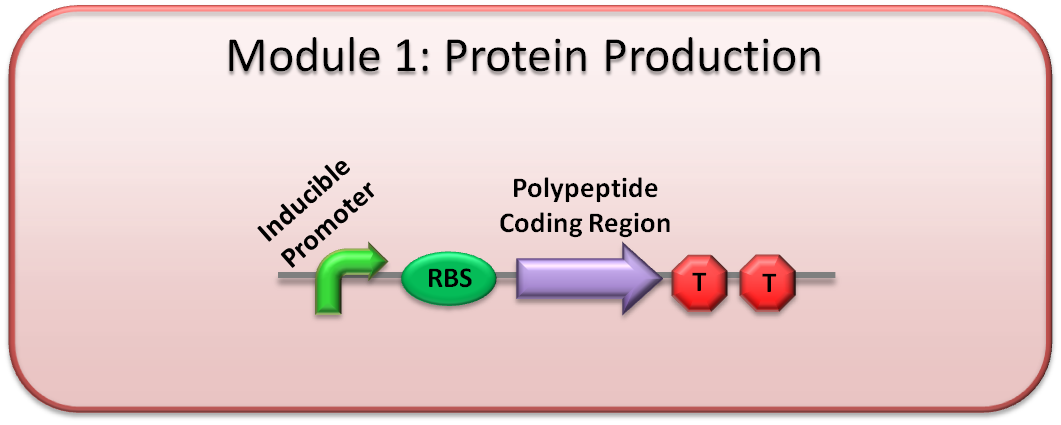
Polypeptide Showcase
To demonstrate The E.ncapsulator's versatility, we have chosen to showcase it with both enzymes and peptides. These two classes of polypeptide have very different properties that we have considered and catered for in The E.ncapsulator's design.
Enzyme Production
One of the challenges involved in enyzme production is the need for resistance to the proteases found within the small intestine. Although The E.ncapsulator is capable of delivering the enyzmes safely through the harsh environment in the stomach, upon release into the small intestine, the cells would be susceptible to breakdown by the proteases naturally found in the gut enviroment. For this reason, we have used protease resistant forms of the enyzmes to be produced.We have chosen two enzymes to showcase The E.ncapsulator's protein production module. These are:
- Cellulase - an enzyme that breaks down the tough fibrous molecule cellulose into cellobiose. In delivering cellulase to the gut we aim to increase the nutritional value of food consumed.
 About cellulase and our proposed solution
About cellulase and our proposed solution
- Phenylalanine Hydroxylase - an enzyme that breaks down the amino acid phenylalanine into tyrosine. In delivering this enzyme to the gut we aim to provide a treatment to those suffering from the metabolic condition, phenylketonuria.
 About the genetic condition phenylketonuria, PAH and how we modified it
About the genetic condition phenylketonuria, PAH and how we modified it
Peptide Production
The delivery and production of short chain peptides is a different challenge altogether. All peptides when synthesised always start with the amino acid methionine. If synthesised directly, this can mean that the peptide no longer has the same bioactivity. The body naturally has a mechanism by which larger polypeptides are degraded into smaller functional peptides.
Using this mechanism, we have designed a universal adapter for short chain peptide production and delivery, by which any peptide can be produced and delivered to the gut.
 About our unique strategy for universal manufacture of peptides
About our unique strategy for universal manufacture of peptides
To demonstrate this, we have chosen to showcase a short chain peptide, opiorphin:
- Opiorphin - is a small pentapeptide (5 amino acids) that is naturally produced by the body, and plays a role in pain relief and as an anti-depressant. By delivering this small peptide into the gut, we hope to offer a natural alternative to addictive drugs.
 About opiorphin, and the remarkable effects of this small pentapeptide
About opiorphin, and the remarkable effects of this small pentapeptide
Results
Wet Lab
We have planned protocols for the testing of each of our enzymes of interest, [http://partsregistry.org/wiki/index.php?title=Part:BBa_K200028 BBa_K200028] and [http://partsregistry.org/wiki/index.php?title=Part:BBa_K200007 BBa_K200007] (see Wet Lab Protocols). However, up till now, we have been unable to ligate them into a testable construct.
Dry Lab
Our Dry Lab team focused on analysing enzyme kinetics theories, such as the well-know Michaelis Menten kinetics. One of the main aims of the dry lab was to characterise the dynamics of the system, making sure enzyme delivery was suitable.
Enzyme kinetic simulations were run to model our system. These are some of the general findings:
- For lower values of [S0], the rate of formation of the product is directly proportional to the amount of [S0]. However, for higher values of [S0], rate of formation of product saturates at a maximum rate.
- Michaelis-Menten approximation only holds for very small values of [E0].
- Increasing K3 values will increase rate of formation of product.
And finally:
- Michaelis-Menten assumption can be applied to our system because for us, KM >> [E0]
Conclusion
Engineering of bacteria to produce proteins is by no means a new development. However, due to the way in which we have designed our chassis to manufacture a protease resitant strains of the enzymes, as well as the unique method for the production and delivery of small peptides, we believe that The E.ncapsulator offers a novel approach to polypeptide production.
Project Tour


Module 1 Contents





 "
"

